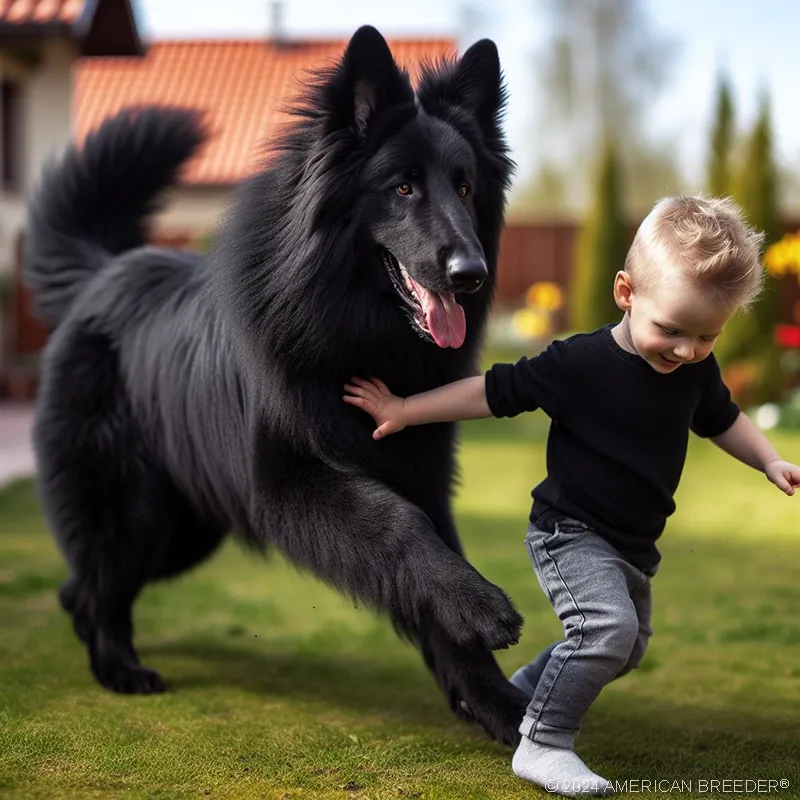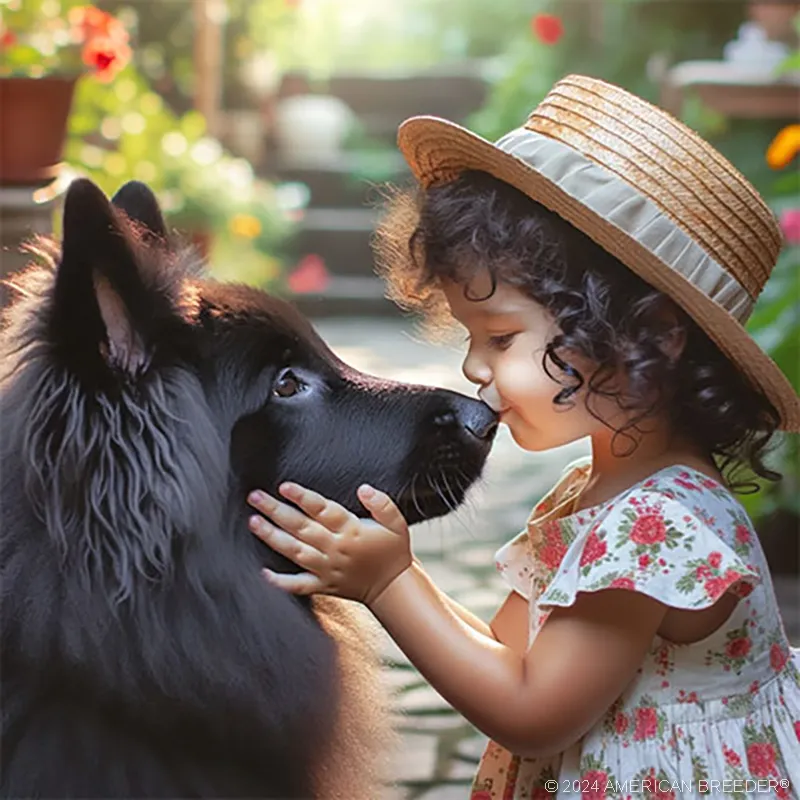Belgian Shepherds: A Holistic Overview
 Unveiling the Belgian Shepherd Dog
Unveiling the Belgian Shepherd Dog
Origins and Development
The Belgian Shepherd Dog, affectionately known as the "Belgian Malinois," possesses a captivating history that traces back to late 19th-century Belgium. A group of skilled breeders and dedicated shepherds played a pivotal role in the development of four distinct varieties: the Malinois, Tervuren, Groenendael, and Laekenois, named after Belgian regions. These varieties share a common ancestry but exhibit unique characteristics and talents.
Belgian Shepherds have gained a reputation for their intelligence, loyalty, and versatility. Initially bred for herding, they have excelled in various roles, including police work, search and rescue missions, and, above all, as cherished companions. Their exceptional trainability and adaptability have made them invaluable in a multitude of fields.
Physical Characteristics
Belgian Shepherds are medium-sized dogs with well-muscled bodies, standing at a height of 22 to 26 inches (56 to 66 cm) at the shoulder and weighing between 40 to 75 pounds (18 to 34 kg), depending on the variety. Their coat varies in color, including fawn, mahogany, and black, with striking black masks and ears. One of the breed's most distinctive features is its pointed, upright ears, which contribute to its alert and intelligent expression.
Belgian Shepherds have a storied history, from herding livestock to serving in law enforcement and military roles. Their dedication to tasks and ability to adapt to diverse scenarios underscore their significance as working dogs.
The Purpose and Original Use of Belgian Shepherds
 Belgian Shepherds were initially bred for herding and safeguarding livestock. Their agility, intelligence, and boundless energy made them exceptional herding dogs. In this role, they demonstrated both independence and reliability, effectively managing and protecting flocks.
Belgian Shepherds were initially bred for herding and safeguarding livestock. Their agility, intelligence, and boundless energy made them exceptional herding dogs. In this role, they demonstrated both independence and reliability, effectively managing and protecting flocks.
As time passed, Belgian Shepherds showcased their versatility and excelled as police dogs, search-and-rescue dogs, and beloved family companions. Their strong work ethic and desire to please make them highly trainable and adaptable to various tasks. Belgian Shepherds' herding heritage remains evident today, as they may occasionally exhibit herding behaviors, such as nipping at heels if not given appropriate outlets for their energy and intelligence.
Appearance and Varieties
Belgian Shepherds possess well-proportioned bodies with an elegant and athletic build. Their coat is typically short to medium in length and dense, providing protection from various weather conditions. While coat colors may vary, the Malinois variety often features a rich fawn background with a black mask and ears. Tervurens share a similar coat with fawn and black coloration but have more fawn on the body. The Groenendael variety stands out with its stunning long, black coat, while the Laekenois showcases a wiry coat.
These dogs have a proud and confident gait. Their intense, almond-shaped eyes exude intelligence, and their expression reflects their alert and attentive nature. Belgian Shepherds possess a well-balanced, square build, conveying both strength and agility. The variations in coat color and texture contribute to their unique charm.
Temperament and Behavior
Belgian Shepherds are renowned for their sharp minds and strong work ethic. They are loyal, protective, and highly alert, making them excellent watchdogs. These dogs thrive on mental stimulation and enjoy being assigned tasks. They are affectionate with their families and can be quite playful.
 However, their intelligence and energy levels can be a double-edged sword. Without proper mental and physical stimulation, they may become bored and resort to undesirable behaviors. Early socialization and consistent, positive reinforcement training are essential to channel their energy positively.
However, their intelligence and energy levels can be a double-edged sword. Without proper mental and physical stimulation, they may become bored and resort to undesirable behaviors. Early socialization and consistent, positive reinforcement training are essential to channel their energy positively.
Belgian Shepherds are often described as "velcro dogs" because of their strong attachment to their owners. They may follow you from room to room and enjoy being involved in family activities.
Care and Maintenance
Belgian Shepherds require consistent care to ensure their well-being. Their exercise needs are substantial, and they thrive in active households. Daily walks, playtime, and mental challenges are crucial to keep them content.
Grooming requirements vary among the different varieties. The short-haired Malinois requires minimal grooming, while the long-haired Tervuren and Groenendael need more attention to prevent matting and tangles. Regular brushing, nail trimming, and ear cleaning should be part of their grooming routine.
Due to their active nature, Belgian Shepherds are prone to certain health issues, including hip dysplasia and elbow dysplasia. Regular veterinary check-ups and a balanced diet tailored to their activity level are essential for their health.
Living with a Belgian Shepherd
 Belgian Shepherds can adapt to different living environments, but they thrive in homes with access to a yard where they can burn off energy. They are best suited for active individuals or families who can provide the mental and physical stimulation they need.
Belgian Shepherds can adapt to different living environments, but they thrive in homes with access to a yard where they can burn off energy. They are best suited for active individuals or families who can provide the mental and physical stimulation they need.
These dogs do well with children and other pets when properly socialized. However, supervision is essential, especially when introducing them to new situations or animals. Belgian Shepherds are known for their strong prey drive. This means they may chase after small animals or even bicyclists if not trained to control this instinct.
Training and Obedience
Training a Belgian Shepherd requires a firm yet positive approach. These dogs are eager to please and respond well to reward-based methods. Early socialization is critical, exposing them to various people, animals, and environments to ensure they grow into well-rounded adults.
Their intelligence can be a blessing and a challenge. They thrive on mental stimulation and excel in obedience training and dog sports. Consistent and structured training sessions are essential to channel their energy and intelligence. Belgian Shepherds often excel in dog sports like obedience, agility, and herding trials. These activities provide an excellent outlet for their energy and mental acuity.
Health and Well-being
 Belgian Shepherds are generally robust dogs, but they are susceptible to certain health issues, as are many breeds. Regular veterinary check-ups are crucial to catch and address potential problems early. Common health concerns include hip and elbow dysplasia, progressive retinal atrophy (PRA), and epilepsy. Responsible breeders screen their breeding dogs for these conditions to reduce the risk of passing them on to puppies.
Belgian Shepherds are generally robust dogs, but they are susceptible to certain health issues, as are many breeds. Regular veterinary check-ups are crucial to catch and address potential problems early. Common health concerns include hip and elbow dysplasia, progressive retinal atrophy (PRA), and epilepsy. Responsible breeders screen their breeding dogs for these conditions to reduce the risk of passing them on to puppies.
Regular exercise, a balanced diet, and mental stimulation are essential for maintaining a Belgian Shepherd's physical and mental well-being. These dogs thrive when they are mentally and physically challenged.
Belgian Shepherds in Society
Belgian Shepherds have made significant contributions to society, particularly in law enforcement and search-and-rescue work. Their keen sense of smell, intelligence, and unwavering dedication make them valuable assets in these fields. They often work alongside police officers to detect drugs, explosives, and track down suspects. In search-and-rescue operations, their agility and determination shine as they locate missing individuals in challenging terrains.
In addition to their roles in service, Belgian Shepherds have earned their place in the world of dog sports and competitions. They excel in obedience trials, agility courses, and herding events, showcasing their versatility and intelligence.
Belgian Shepherds as Companions
 While Belgian Shepherds have a strong work ethic and excel in various professional roles, they are also exceptional companions. Their loyalty, affection, and protectiveness make them a beloved addition to many families. However, potential owners should be prepared for their high energy levels and need for mental stimulation.
While Belgian Shepherds have a strong work ethic and excel in various professional roles, they are also exceptional companions. Their loyalty, affection, and protectiveness make them a beloved addition to many families. However, potential owners should be prepared for their high energy levels and need for mental stimulation.
Responsible Ownership
Owning a Belgian Shepherd is a rewarding but significant responsibility. Prospective owners should carefully consider whether they can meet the breed's exercise, training, and socialization needs. Early training and socialization are paramount to ensure they grow into well-adjusted adults.
Responsible ownership includes providing proper healthcare, grooming, and nutrition. Regular vet check-ups, a balanced diet, and a grooming routine tailored to their coat variety are essential. Ensuring they live in a safe and secure environment is crucial.
Legal Responsibilities
Owners should also be aware of legal responsibilities related to dog ownership, including leash laws, licensing, and local ordinances. Additionally, proper identification, like microchipping or tags, can help reunite a lost Belgian Shepherd with its owner.
Resources and Support
 For those considering bringing a Belgian Shepherd into their lives, numerous resources and support networks are available. Reputable breeders, rescue organizations, and breed clubs can provide guidance and assistance in finding the right dog for your needs. Online forums and communities dedicated to Belgian Shepherds offer a platform for sharing experiences, seeking advice, and connecting with fellow enthusiasts. These resources can be invaluable in your journey as a Belgian Shepherd owner.
For those considering bringing a Belgian Shepherd into their lives, numerous resources and support networks are available. Reputable breeders, rescue organizations, and breed clubs can provide guidance and assistance in finding the right dog for your needs. Online forums and communities dedicated to Belgian Shepherds offer a platform for sharing experiences, seeking advice, and connecting with fellow enthusiasts. These resources can be invaluable in your journey as a Belgian Shepherd owner.
Conclusion
In conclusion, the Belgian Shepherd Dog is a remarkable breed known for its intelligence, versatility, and unwavering loyalty. Whether you're drawn to their history as herders, their roles in society as working dogs, or their loving companionship, Belgian Shepherds have much to offer. However, owning a Belgian Shepherd comes with responsibilities, including proper care, training, and socialization. They thrive in active households and excel when given the opportunity to exercise their bodies and minds.
By understanding their unique characteristics and needs, you can embark on a fulfilling journey with your Belgian Shepherd and experience the joys of companionship with one of the world's most exceptional dog breeds. We hope this comprehensive guide has provided you with valuable insights and knowledge to make informed decisions about Belgian Shepherd ownership. Whether you're a first-time owner or an experienced enthusiast, the Belgian Shepherd's remarkable qualities are sure to leave a lasting impression on your life.
Belgian Shepherd Dog Quick Reference Guide
Breed Background: Origin: Belgium | Breed Purpose: Herding and Guarding | AKC Class: Herding Group | Year Recognized by AKC: 1911
 Appearance: Size: Medium | Weight: 40-75 pounds | Coat Type: Short, dense | Colors & Patterns: Varies by variety | Distinctive Features: Alert expression, triangular ears
Appearance: Size: Medium | Weight: 40-75 pounds | Coat Type: Short, dense | Colors & Patterns: Varies by variety | Distinctive Features: Alert expression, triangular ears
Temperament: Energy Level: 5 | Loyalty: 5 | Friendliness to Pets: 3 | Friendliness to Strangers: 3 | Trainability: 5 | Playfulness: 4 | Frequent Barker: 2 | Chase Instincts: 4 | Sense of Smell: 3 | Drive to Hunt: 3
Health & Care: Health Issues: Hip Dysplasia, Elbow Dysplasia, PRA | Lifespan: 12-14 years | Grooming Difficulty: Moderate | Exercise Needs: High
Socialization: Interaction with Children: Good with early socialization | Interaction with Pets: Can be good with proper introduction | Interaction with Strangers: Cautious but not aggressive | Elderly Compatibility: Depends on individual temperament | Ease of Training: Highly trainable
Suitable Living Arrangements: Apartment: No | House: Yes | Rural Area: Yes | Yard Size Requirements: Large yard preferred
Training & Obedience: Trainability: 4 (1-5) | Intelligence: 5 (1-5) | Obedience: 4 (1-5) | Problem-Solving: 4 (1-5) | Easily Stimulated: 5 (1-5) | Focus Level: 4 (1-5) | Easily Distracted: 3 (1-5)
Financial Planning: Typical Price Range: $800 - $2,500 | Initial Expenses: Puppy vaccinations, crate, and basic supplies | Ongoing Annual Expenses: Food, veterinary care, grooming
Breeding: Reproductive Maturity: 6-9 months | Litter Frequency: Once a year | Litter Size: 6-10 puppies | Stud Cost: Varies widely | Breeding Challenges: Selective breeding and health screening recommended
